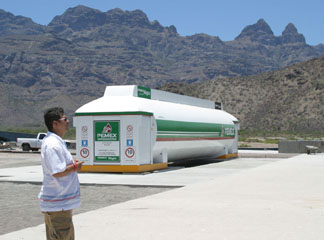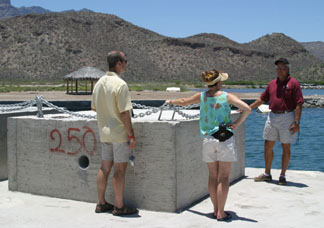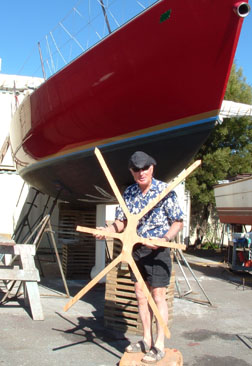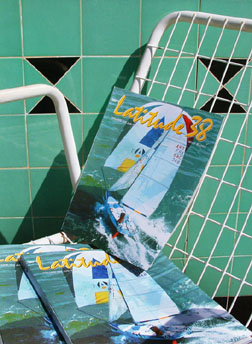 |
Photo of the Day: Mari-Cha IVJuly 2 - San Francisco Today's Photo of the Day is of the deck of the modern 140-ft schooner Mari-Cha IV which, if there is any wind today, will start on what could very well be a new elapsed-time record in the West Marine Pacific Cup from San Francisco to Hawaii. The only things that could stop her are a breakdown, which is unlikely, because she's new and has been gone over with a fine tooth comb, or the Pacific High being poorly established and coming down to the southeast. Alas, the High is looking a little fluky. 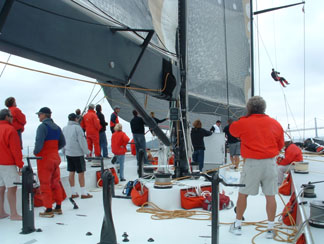 Photo Debbie Castellana of KKMI How fast can Mari-Cha sail? According to Southern Californian Mike Howard, the big guy in the right foreground with his back turned and who was aboard her when she broke the transatlantic record last fall, the delivery crew had her up to just under 38 knots on the way from Antigua to Panama. Again, this was a delivery and therefore she was carrying shortened sail. So as unthinkable as it might seem, this mighty monohull is almost certainly capable of 40 knots. To put that in perspective, the fastest the maxi-cat PlayStation/Cheyenne ever went was about 45 knots. At 3:35 p.m. this afternoon, the last of the Pacific Cup fleet, the big guys, will start in front of the St. Francis YC. A great place to watch the four starters - Icon, a Perry 65; Braveheart, a TransPac 52; Magnitude 80, an Andrews 80; and Mari-Cha IV, a 140-ft schooner - will be from the Bay side of the Golden Gate Bridge. As for the rest of the Pacific Cup fleet, the wind has been light, so it's almost certain these bigger boats will rocket by to claim most of the corrected time honors. |
